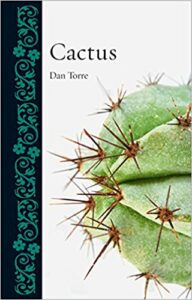-

R450This user-friendly, richly illustrated field guide features more than 700 southern African succulents, focusing on the most interesting and commonly encountered species. An introduction to families and their key features will help readers identify the relevant plant group, while concise accounts describing the plants’ diagnostic features, along with distribution maps, will enable quick ID of species.
-

The first scientific collection of a Clivia species (C. nobilis) was made by an English naturalist, traveler, artist and author, William J. Burchell (1781 – 1863).
-

R440Learn all about the Japanese art of creating pot-less plants, known as kokedama, from botanical extraordinaire Coraleigh Parker, and have a go a creating your own pot-less, hanging plants. Coraleigh’s breath-taking moss ball creations, featuring ferns, succulents, herbs, orchids and even small trees, are suspended in mid-air and supported by nothing more than a series…
-

R365PLANTA SAPIENS opens up the plant kingdom like never before and will transform how you view other forms of life, to see plants as allies in tackling global problems rather than as mere resources; as teachers from whom we can learn about our own minds.
-

R500This ground-breaking book is the result of the shared fascination of an artist and a scientist with the perfect design of pollen grains, organisms so small that they cannot be seen without a microscope.
-

R500Plants are truly remarkable: even with all our modern technological prowess they still feed, clothe and shelter us, help transport us and cure us. Helen and William Bynum are expert guides to the rich histories, significance and uses of over 80 key species from around the world, exploring our relationship with them, both utilitarian and aesthetic, and their myriad benefits and cultural resonances.
-

R500The genus Gladiolus has fascinated plant collectors, taxonomists and the general public for centuries. Known for their spectacular ‑ Flowers, these highly adapted and specialised plants occur throughout Africa, Madagascar, Europe and the Middle East. South Africa is home to more than half of the world’s Gladiolus species and the Western Cape is the heart of species diversity.
-

R260Cacti are full of contradictions. Although many are found in the driest and most barren environments on earth, some grow exclusively in the branches of the rainforest canopy. Many species bristle with ferocious-looking spines, while other varieties are perfectly smooth. And while they might strike us as the most austere plants on earth, nearly all of them exhibit remarkable floral displays—some even larger than the plant itself. In Cactus, Dan Torre explores these unique plants as they appear all around the world and throughout art, literature, and popular culture.
-

R260In this book, Celia Fisher traces the story of this important and highly popular plant, from its mountain beginnings to its prevalence in the gardens of Mughal, Persian, and Ottoman potentates; from its migration across the Silk Road to its explosive cultivation in the modern European world.









